Memphis
Q5715Memphis (Egyptian: Inbu-Hedj, "white walls", and Men-nefer, "lasting and beautiful"; Greek: Μέμφις): capital of ancient Egypt.
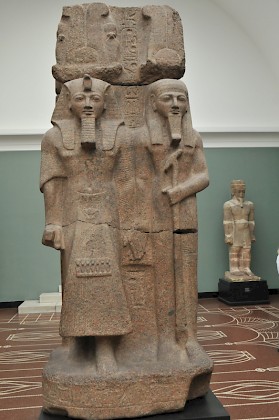
Memphis is part of a larger zone of settlements at the apex of the delta of the Nile. This zone begins to the north of modern Cairo, more or less on the site of the airport, at Heliopolis, and stretches to the south along the pyramids of Giza to the temple of Ptah and the pyramids of Saqqara and Abusir. In this zone were the palaces (and the tombs) of Egypt's first kings, and it all belonged together. In fact, we should consider the question whether this complex of residences, temples, and tombs can in fact be called a city.
The site of the temple of Ptah, called the Hut-ka-Ptah ("Enclosure of the ka of Ptah"), may be considered as the heart of the heart of Egypt. The Apis bull was a manifestation of the deity. The fortress was called Inbu-Hedj, "the white walls"; Greek visitors would correctly call this "the white fortress". It was also called Men-nefer, which means something like "lasting and beautiful" and was rendered as Memphis by the Greeks. They rendered the name Hut-ka-Ptah as Aigyptos.
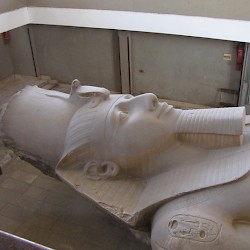 Memphis, Statue of Ramesses II |
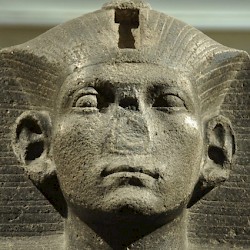 Memphis, Portrait of Amunemhet III |
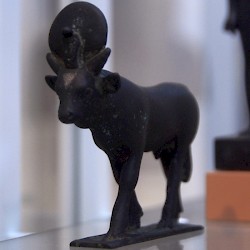 Memphis, statuette of an Apis bull |
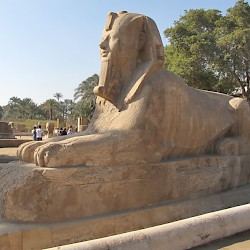 Memphis, Sphinx |
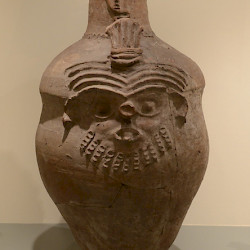 Memphis, Bottle in the shape of Bes |
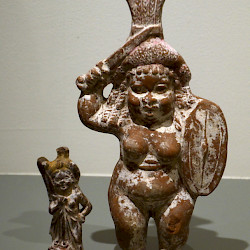 Memphis, Figurine of Beset |